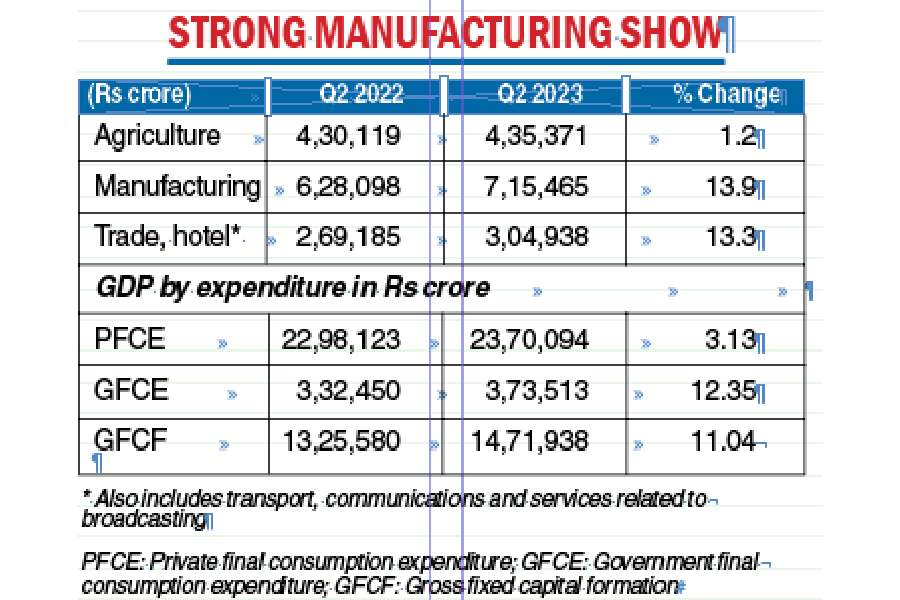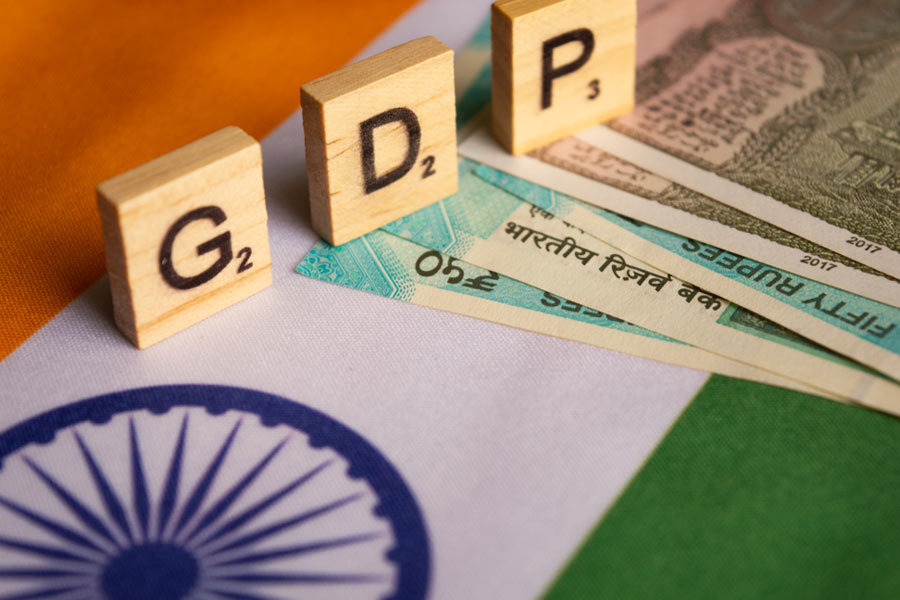The Indian economy grew 7.6 per cent in the September quarter, the fastest among large economies, because of an improved performance by the manufacturing, construction and mining sectors.
The gross domestic product (GDP) expanded 6.2 per cent in the July-September quarter of 2022-23. However, the second quarter growth this fiscal is lower than the June quarter growth of 7.8 per cent. The RBI had forecast 6.5 per cent growth in the second quarter.
Chief economic adviser V. Anantha Nageswaran said: “We retain the 2023-24 GDP growth forecast of 6.5 per cent but we will rework the numbers to see if the July-September growth data adds an upside to the forecast.”
Dharmakirti Joshi, chief economist, Crisil said: “After a strong growth of 7.8 per cent in the first quarter, the second quarter also surprised on the upside with 7.6 per cent growth. This takes the first half GDP growth to a robust 7.7 per cent.”

“However, we still expect growth to be slow in the second half due to deepening global slowdown and the lagged impact of domestic rate hikes manifesting fully through the second half of this fiscal,” Joshi said.
He said erratic weather and an El Niño event created some downside to agricultural growth prospects.
Upasna Bhardwaj, chief economist, of Kotak Mahindra Bank, said: “The sharp upside surprise to the Q2 GDP figures is a welcome sign especially as it comes in the backdrop of a broad-based pick-up across most non-agricultural sectors. We, however, expect the H2 growth to moderate. Having said that the full year GDP numbers have got a big filip after today’s figures.”
According to National Statistical Office (NSO) data, the agriculture sector GVA (Gross Value Added) growth decelerated to 1.2 per cent in the September 2023 quarter from 2.5 per cent a year ago.
GVA in the manufacturing sector showed a growth of 13.9 per cent in the second quarter compared with a contraction of 3.8 per cent a year ago.
Nominal GDP or GDP at current prices in the second quarter is estimated at Rs 71.66 lakh crore against Rs 65.67 lakh crore a year ago, showing a growth of 9.1
per cent compared with 17.2 per cent a year ago.
“Despite the likelihood of nominal GDP growth being close to 9 to 9.5 per cent for 2023-24, below the FY24 Budget expectation of 10.5 per cent, the higher direct tax buoyancy would make up for any shortfall due to this lower nominal growth,” D.K. Srivastava, chief policy advisor, EY India, said.
Aditi Nayar, chief economist, Icra, said: “The surprise was largely led by the manufacturing sector, with growth surging to a nine-quarter high led by a favourable base, an uptick in volume growth and an improvement in profit margins owing to continued deflation in input prices.”
Sunil Kumar Sinha, principal economist and senior director – of public finance,
at India Ratings and Research, said the below-par growth in the agriculture sector
implies rural demand is under stress which is preventing the consumption demand from being broad-based.
“The same is adequately getting reflected in the subdued sales of FMCG products in rural areas. As such the impact of kharif production on rural demand will be visible in the third quarter when the rice procurement takes place,” he said.
Core growth
Meanwhile, the output of eight key infrastructure sectors jumped 12.1 per cent in October 2023 against 0.7 per cent expansion a year ago period on account of a sharp uptick in the production of coal, steel, cement and electricity, according to the official data.
The fiscal deficit at the end of October stood at Rs 8.03 lakh crore or 45 per cent of the full-year budget estimate, according to data released by the Controller General of Accounts (CGA).
The deficit was at 45.6 per cent of the budget estimates a year ago in 2022-23.











